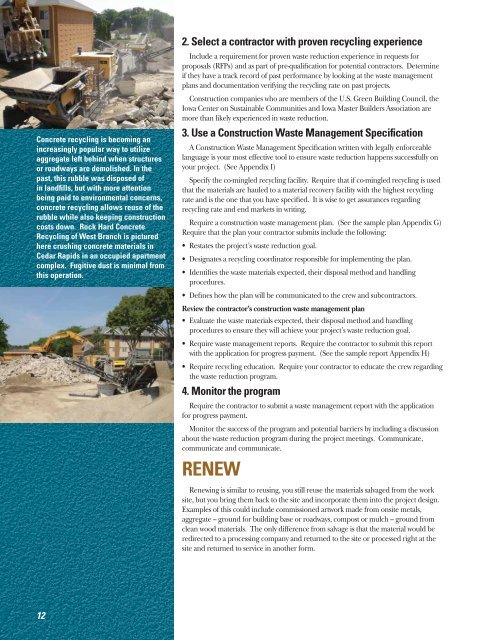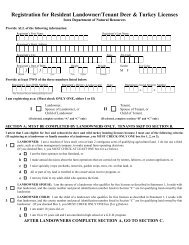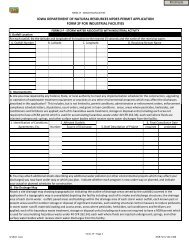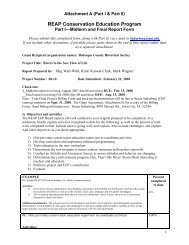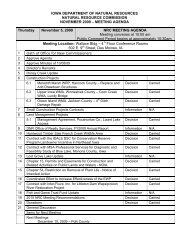Waste Reduction, Construction and Demolition Debris - Iowa ...
Waste Reduction, Construction and Demolition Debris - Iowa ...
Waste Reduction, Construction and Demolition Debris - Iowa ...
Create successful ePaper yourself
Turn your PDF publications into a flip-book with our unique Google optimized e-Paper software.
Concrete recycling is becoming an<br />
increasingly popular way to utilize<br />
aggregate left behind when structures<br />
or roadways are demolished. In the<br />
past, this rubble was disposed of<br />
in l<strong>and</strong>fills, but with more attention<br />
being paid to environmental concerns,<br />
concrete recycling allows reuse of the<br />
rubble while also keeping construction<br />
costs down. Rock Hard Concrete<br />
Recycling of West Branch is pictured<br />
here crushing concrete materials in<br />
Cedar Rapids in an occupied apartment<br />
complex. Fugitive dust is minimal from<br />
this operation.<br />
2. Select a contractor with proven recycling experience<br />
Include a requirement for proven waste reduction experience in requests for<br />
proposals (RFPs) <strong>and</strong> as part of pre-qualification for potential contractors. Determine<br />
if they have a track record of past performance by looking at the waste management<br />
plans <strong>and</strong> documentation verifying the recycling rate on past projects.<br />
<strong>Construction</strong> companies who are members of the U.S. Green Building Council, the<br />
<strong>Iowa</strong> Center on Sustainable Communities <strong>and</strong> <strong>Iowa</strong> Master Builders Association are<br />
more than likely experienced in waste reduction.<br />
3. Use a <strong>Construction</strong> <strong>Waste</strong> Management Specification<br />
A <strong>Construction</strong> <strong>Waste</strong> Management Specification written with legally enforceable<br />
language is your most effective tool to ensure waste reduction happens successfully on<br />
your project. (See Appendix I)<br />
Specify the co-mingled recycling facility. Require that if co-mingled recycling is used<br />
that the materials are hauled to a material recovery facility with the highest recycling<br />
rate <strong>and</strong> is the one that you have specified. It is wise to get assurances regarding<br />
recycling rate <strong>and</strong> end markets in writing.<br />
Require a construction waste management plan. (See the sample plan Appendix G)<br />
Require that the plan your contractor submits include the following:<br />
• Restates the project’s waste reduction goal.<br />
• Designates a recycling coordinator responsible for implementing the plan.<br />
• Identifies the waste materials expected, their disposal method <strong>and</strong> h<strong>and</strong>ling<br />
procedures.<br />
• Defines how the plan will be communicated to the crew <strong>and</strong> subcontractors.<br />
Review the contractor’s construction waste management plan<br />
• Evaluate the waste materials expected, their disposal method <strong>and</strong> h<strong>and</strong>ling<br />
procedures to ensure they will achieve your project’s waste reduction goal.<br />
• Require waste management reports. Require the contractor to submit this report<br />
with the application for progress payment. (See the sample report Appendix H)<br />
• Require recycling education. Require your contractor to educate the crew regarding<br />
the waste reduction program.<br />
4. Monitor the program<br />
Require the contractor to submit a waste management report with the application<br />
for progress payment.<br />
Monitor the success of the program <strong>and</strong> potential barriers by including a discussion<br />
about the waste reduction program during the project meetings. Communicate,<br />
communicate <strong>and</strong> communicate.<br />
RENEW<br />
Renewing is similar to reusing, you still reuse the materials salvaged from the work<br />
site, but you bring them back to the site <strong>and</strong> incorporate them into the project design.<br />
Examples of this could include commissioned artwork made from onsite metals,<br />
aggregate – ground for building base or roadways, compost or mulch – ground from<br />
clean wood materials. The only difference from salvage is that the material would be<br />
redirected to a processing company <strong>and</strong> returned to the site or processed right at the<br />
site <strong>and</strong> returned to service in another form.<br />
12


